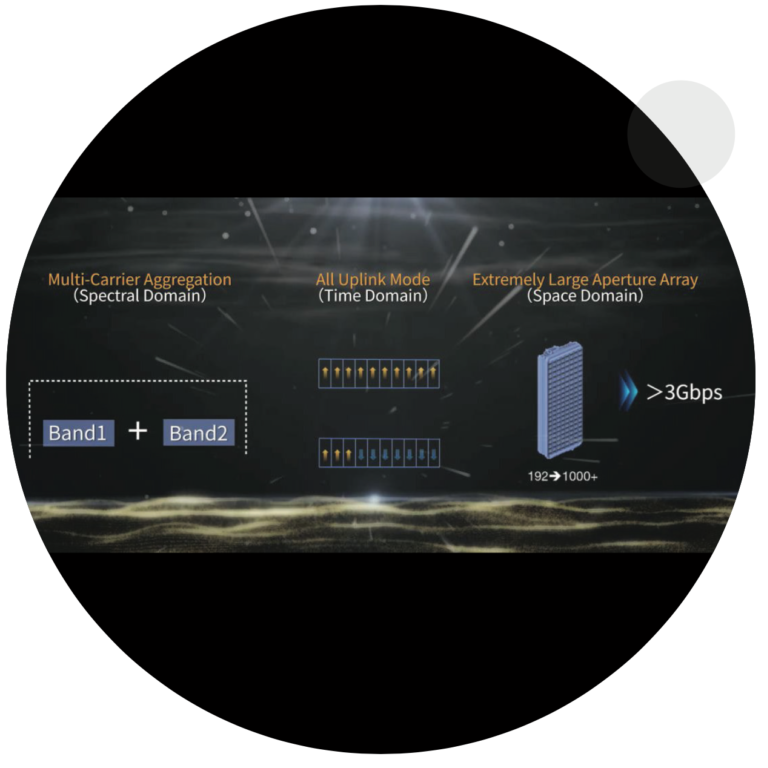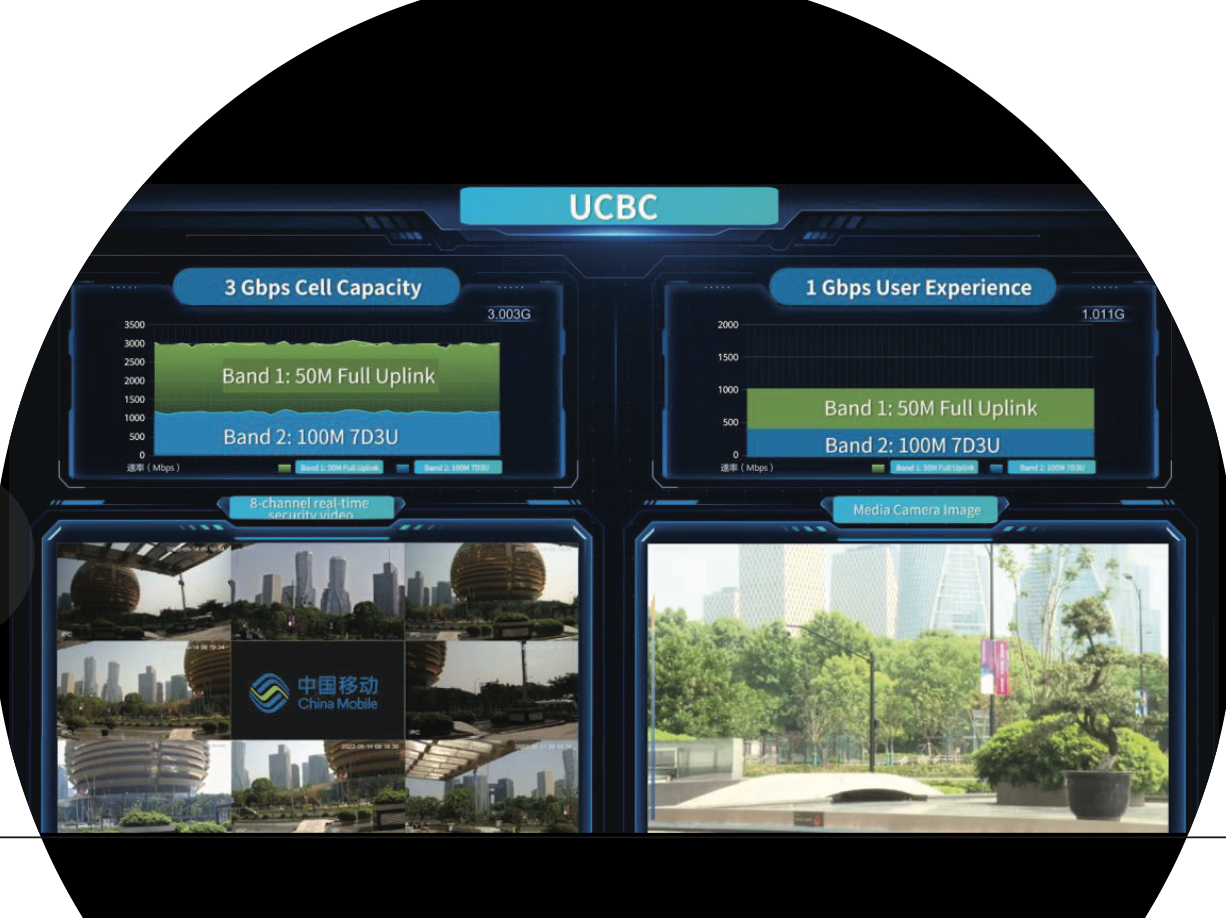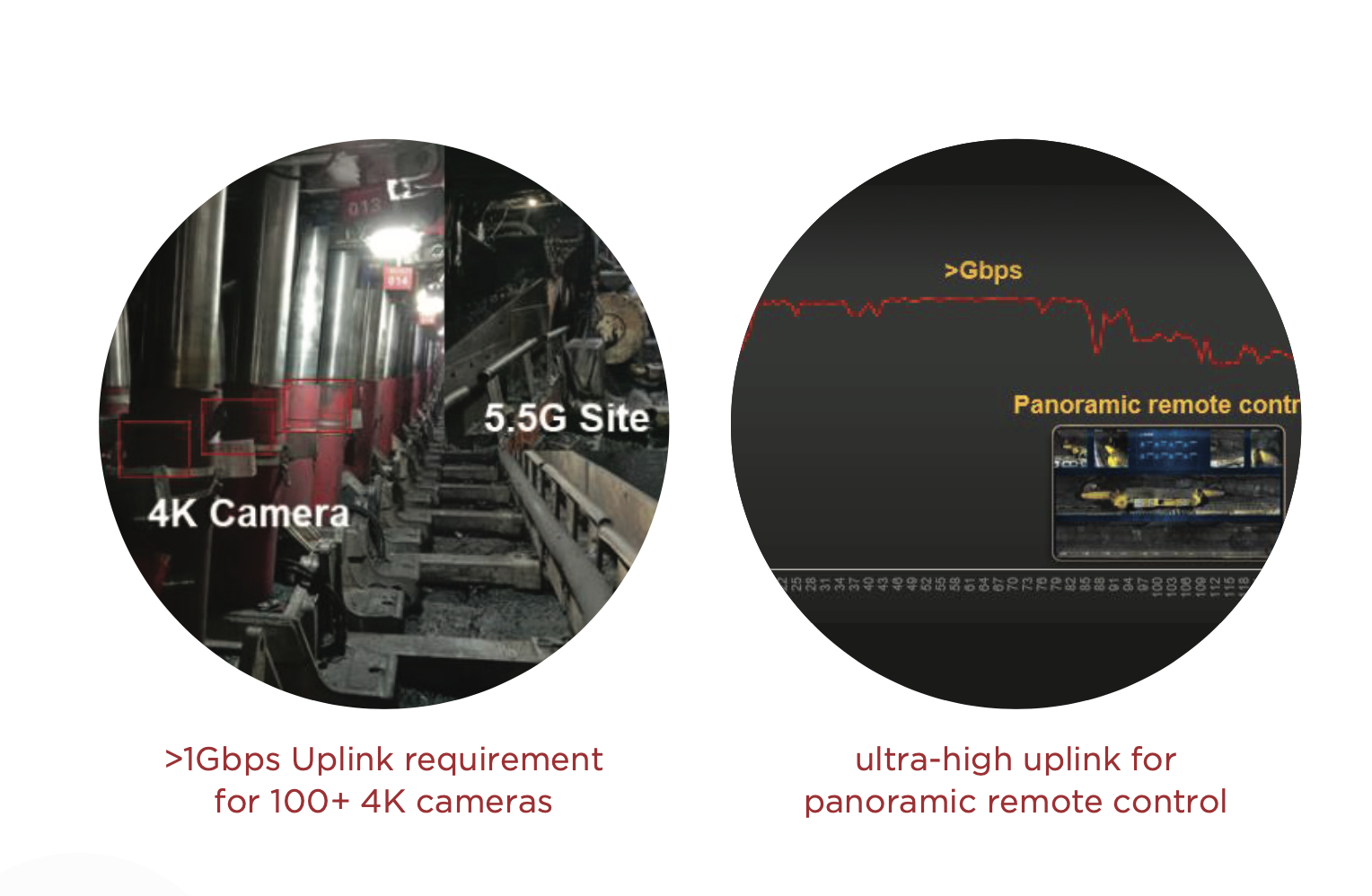5G Transformation Hub
5G Advanced Could Turbocharge Video Uploads
Field test of UCBC tech achieves uplink of more than 1 Gbps for a single user
Huawei and China Mobile have conducted field tests that demonstrate that 5G Advanced can provide the uplink capacity and throughput to support the fast and efficient transmission of high-resolution videos from anywhere with network coverage.
Select a project
Contents
Challenge
Both consumers and companies are looking to capture ultra high resolution videos (4K/8K) filmed from a variety of locations, ranging from city streets and parks to manufacturing plants and warehouses. In many cases, portable cameras are being used to film from different vantage points. The footage they capture needs to be transmitted to a server or computer where it can be processed and edited or analysed, but today’s wireless backhaul solutions generally lack sufficient uplink bandwidth.
Solution
In the second quarter of 2022, Huawei and China Mobile conducted a field test of uplink centric broadband communication (UCBC) technology in a prototype 5G-Advanced network in Hangzhou city, Zhejiang Province, China. Huawei says 5G-Advanced UCBC utilises multi-carrier aggregation, all-uplink mode and extremely large aperture array massive MIMO to improve efficiency tenfold and support speeds of more than 1 Gbps in the uplink. That means the video footage doesn’t need to be heavily compressed, enabling more raw data to be used in post-production or image analysis.
Impact & Statistics
Employing 50 MHz SUL (supplementary uplink) and 100 MHz TDD spectrum, the field tests achieved an uplink cell throughput of over 3 Gbps, which Huawei believes is an industry-first. The field test also demonstrated an uplink peak rate of over 1 Gbps for a single user. Huawei estimates there will be demand for 1 Gbps to 1.5 Gbps uplink capacity per 1,000 square meters in indoor industrial scenarios.
Wider Implications
UCBC technology could enable the film and television industries to easily upload high-definition video materials that meet post-processing requirements. That could remove the need for the expensive and cumbersome outside broadcast vans and wiring used for data transmission today. With UCBC, one person with one backpack could handle a live broadcast. Consumers could also use 5G-Advanced UCBC to live broadcast videos in real-time. In the manufacturing sector, the step change in uplink capacity could support video surveillance and machine vision applications that require ultra high resolution footage. For example, machine vision for intelligent quality inspection typically depends on video images with a resolution of 4K. 5G-Advanced UCBC could also support new innovative applications, such as automatic patrol vehicles and cloud robots.
Stakeholders
Huawei, CMCC (China Mobile Communications Group Co., Ltd.)
02
5G-Advanced Could Turbocharge Video Uploads
Field test of UCBC technology achieves uplink of more than 1 Gbps for a single user
Video has become a very popular medium for communication and
storytelling. Both consumers and companies are increasingly looking to
capture ultra high resolution videos (in 4K or 8K definition) filmed from a
variety of locations, ranging from city streets and parks to manufacturing plants
and warehouses.
In many cases, portable cameras are being used to film from different vantage points, while businesses are installing multiple cameras to support video surveillance and machine vision. The high resolution footage captured by large numbers of cameras needs to be transmitted to a server or computer where
it can be processed and edited or analysed, but today’s wireless backhaul solutions generally lack sufficient uplink bandwidth. Huawei estimates there will be demand for 1 Gbps to 1.5 Gbps uplink capacity per 1,000 square meters in indoor industrial scenarios, for example.
In the second quarter of 2022, Huawei and China Mobile conducted a field test of uplink centric broadband communication (UCBC) technology in a prototype 5G-Advanced network in Hangzhou city, Zhejiang Province, China. Huawei says 5G-Advanced UCBC utilises multi-carrier aggregation, all-uplink mode and extremely large aperture array massive MIMO to improve efficiency tenfold and support speeds of more than 1 Gbps in the uplink (see diagram). That means the video footage doesn’t need to be heavily compressed, enabling more raw data to be used in post-production or image analysis.
“This technology can break the TDD performance ceiling,” says Deng Wei, Deputy Director of Wireless and Terminal Technology Research Institute of China Mobile Research Institute. “It can flexibly adjust the uplink and downlink bandwidths to effectively meet the requirements of large uplink or downlink rates, providing a broad space for more industry application innovation.”
“Recently, China Mobile has used the dual-carrier UDD technology to test 50 MHz SUL and 100 MHz TDD,” he adds. “For the first time in the industry, the uplink cell throughput exceeds 3 Gbps and the uplink peak rate of a single user exceeds 1 Gbps (see chart), improving the uplink rate by 10 times.”
“The technical challenges included multiband convergence for ultra-high uplink, i.e. how to implement flexible spectrum access of multiple bands,” explains John Gao, President of 5.5G Domain, Huawei. “It involves the design of a transmission time interval-level carrier selection scheme and the suitable frequency combination selection. At the same time, the terminal needs to support 3GPP Release-18 protocol.”



John Gao
President of 5.5G Domain, Huawei
03
Making video capture more flexible and cost-effective
As 5G-Advanced networks are deployed, UCBC technology could ultimately be used by multiple industries to capture high-resolution video. It could, for example, enable the film and television industries to easily upload high-definition video materials that meet post-processing require- ments. That could remove the need for the expensive and cumbersome outside broadcast vans and wiring used for video transmission today. The UCBC solution could be particularly valuable in complex filming environments, such as narrow or crowded streets. In such situations, it can be very difficult to install traditional outside broadcast equipment.
With a UCBC solution, one
person with one backpack could
potentially handle a live
broadcast, further opening up
video production to amateurs,
as well as professional film and
TV crews. A 5G-Advanced
network could potentially provide
enough bandwidth to support live
streaming of 360 degree images.
“The HD video content could be
directly uploaded to the cloud
server, where cloud rendering can
be used to produce the media,
improving quality and allowing for
faster and broader distribution,”
says John Gao.
As well as supporting live entertainment and information services, the technology could be used for live broadcasts to sell goods or conduct auctions.
In the manufacturing sector, the step change in uplink capacity could support video surveillance and machine vision applications
that require ultra high resolution footage. For example, machine vision for intelligent quality inspection typically depends on video images with a resolution of 4K.
Huawei intends to also explore how UCBC could be used to support automated vehicles and robots. These machines could use HD cameras to monitor environments that are dangerous or impractical for human
beings. For example, in coal
mines, a UCBC solution could
be used to capture images from
multiple remotely-controlled 4K
cameras without the need to
deploy employees or long cables
(see images).
The large uplink capacity
provided by UCBC could also
be used to support so-called
massive IoT deployments, where
large numbers of devices are
uploading data simultaneously.
“Next, we will continue to promote the verification of more key technologies and systems to
achieve in-depth integration of the innovation chain and industry chain,” says Deng Wei.
Huawei and China Mobile plan
to run further field tests as a
precursor to the deployment of
5G-Advanced networks.
“Pre-commercial showcase
projects will be implemented to
verify the UCBC performance in
practical scenarios, including live
broadcasting in large international
sports games, massive broadband
internet of things, cloud robots,
surface defect detection using
HD cameras, and so on,” says John Gao.



John Gao
President of 5.5G Domain, Huawei
04
About
About the GSMA
The GSMA is a global organisation unifying the mobile ecosystem to discover, develop and deliver innovation foundational to positive business environments and societal change. Our vision is to unlock the full power of connectivity so that people,
industry, and society thrive. Representing mobile operators and organisations across the mobile ecosystem and adjacent industries, the GSMA delivers for its members across three broad pillars: Connectivity for Good, Industry Services and Solutions, and Outreach. This activity includes advancing policy, tackling today’s biggest societal challenges, underpinning the technology and interoperability that make mobile work, and providing the world’s largest platform to convene the mobile ecosystem at the MWC and M360 series of events.
For more information, please visit the GSMA corporate website at www.gsma.com.
Follow the GSMA on Twitter: @GSMA.
GSMA 5G Transformation Hub
The GSMA 5G Transformation Hub is a source of information on some of the most innovative 5G solutions in the world. This portal contains case studies detailing design, benefits, key players, measured value and the future impact of scaling up these 5G solutions worldwide. The 5G Era is now firmly established and this family of standardised GSM technologies, including mmWave, are being rolled out successfully across the globe. The GSMA 5G Transformation Hub, launched at MWC Barcelona in 2022, provides details of how 5G is best placed to deliver real value for a range of key sectors including manufacturing, energy, transportation, media and live entertainment, smart cities and construction.. Many more case studies will be added, in the coming months, covering even more industries and the GSMA is asking Members to nominate innovative 5G case studies to add to this global digital showcase. The 5G Transformation Hub and this particular Case Study are both sponsored by Qualcomm.
About this case study
This case study is for information only and is provided as is. The GSM Association makes no representations and gives no warranties or undertakings (express or implied) with respect to the study and does not accept any responsibility for , and hereby disclaims any liability for the accuracy or completeness or timeliness of the information contained in this document. Any use of the study is at the users own risk and the user assumes liability for any third party claims associated with such use.